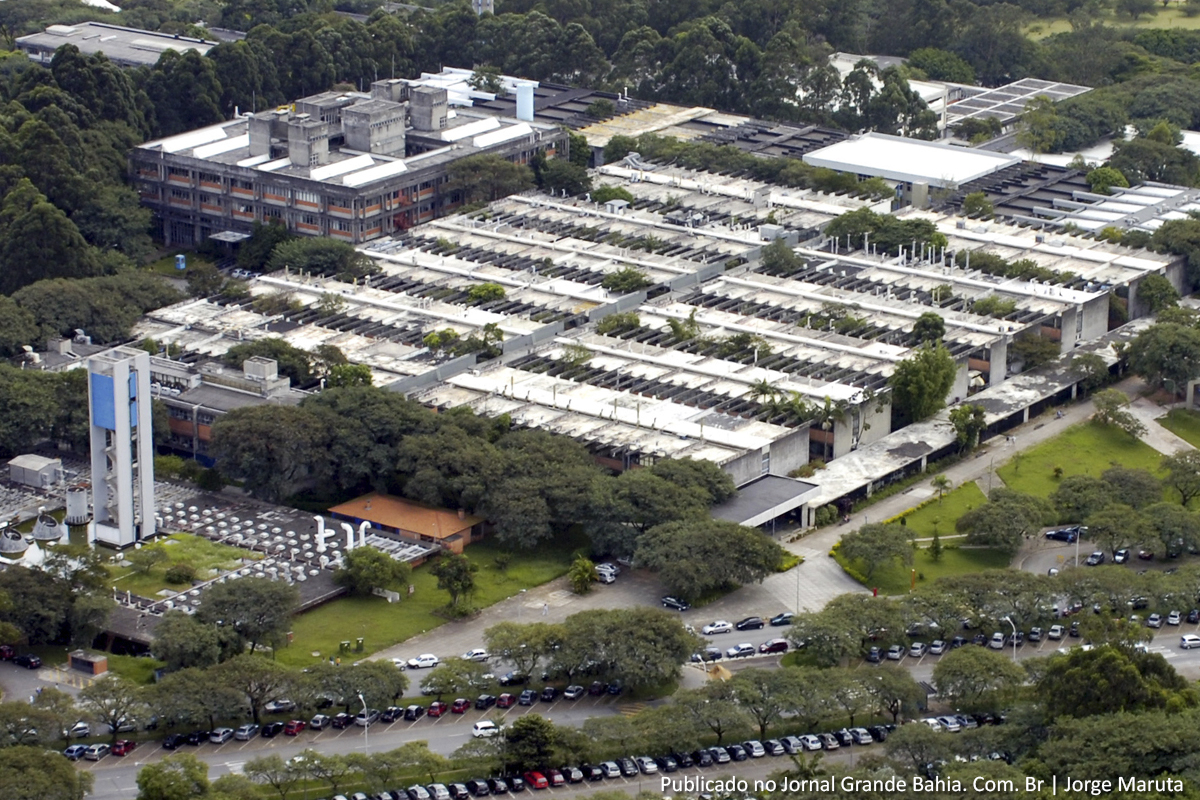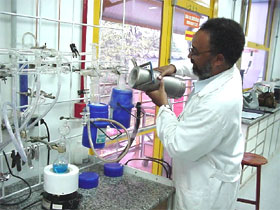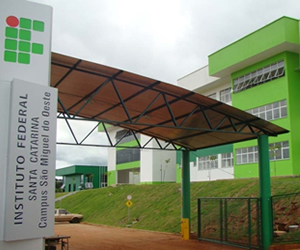
Quim. Nova 2014, 37(1), 164-167, 2014
Um reator fotoquímico barato e eficiente para experimentos de química
Ramon Kenned Sousa AlmeidaI; Cláudia MartelliI; Gilson Herbert Magalhães DiasI; Julio Cesar Araujo da SilvaII, *
An efficient and inexpensive device for undergraduate chemistry classes aiming teaching the photolytic synthesis concepts. This device presents simplicity, low costs, class-compatible reaction times and good yields.
Ramon Kenned Sousa Almeidaa , Cláudia Martellia , Gilson Herbert Magalhães Diasa e Julio Cesar Araujo da Silvab,* a Instituto de Química, Universidade Estadual de Campinas, 13083-970 Campinas – SP, Brasil b Instituto Federal de Ciência e Tecnologia de Santa Catarina, Estrada do Senadinho, s/no , Centro, 88625-000 Urupema – SC, Brasil
 A CHEAP AND EFFICIENT PHOTOCHEMICAL REACTOR FOR CHEMICAL EXPERIMENTS. In this work, we present an efficient and inexpensive device for undergraduate chemistry classes aimed at teaching and learning the photolytic synthesis concepts. A photochemical reactor was tested for the synthesis of the organometallic compound enneacarbonyldiiron from iron pentacarbonyl in acetic acid, and its formation evidenced by FTIR analysis. Although similar devices have been described in other studies, none of these offered the simplicity, low cost, class-compatible reaction times and good yields afforded by the procedure reported herein.
Keywords: photochemistry; reactor; enneacarbonyldiiron.
A CHEAP AND EFFICIENT PHOTOCHEMICAL REACTOR FOR CHEMICAL EXPERIMENTS. In this work, we present an efficient and inexpensive device for undergraduate chemistry classes aimed at teaching and learning the photolytic synthesis concepts. A photochemical reactor was tested for the synthesis of the organometallic compound enneacarbonyldiiron from iron pentacarbonyl in acetic acid, and its formation evidenced by FTIR analysis. Although similar devices have been described in other studies, none of these offered the simplicity, low cost, class-compatible reaction times and good yields afforded by the procedure reported herein.
Keywords: photochemistry; reactor; enneacarbonyldiiron.





 Instituto de Química, Universidade Estadual de Campinas
Instituto de Química, Universidade Estadual de Campinas







 A CHEAP AND EFFICIENT PHOTOCHEMICAL REACTOR FOR CHEMICAL EXPERIMENTS. In this work, we present an efficient and inexpensive device for undergraduate chemistry classes aimed at teaching and learning the photolytic synthesis concepts. A photochemical reactor was tested for the synthesis of the organometallic compound enneacarbonyldiiron from iron pentacarbonyl in acetic acid, and its formation evidenced by FTIR analysis. Although similar devices have been described in other studies, none of these offered the simplicity, low cost, class-compatible reaction times and good yields afforded by the procedure reported herein.
Keywords: photochemistry; reactor; enneacarbonyldiiron.
A CHEAP AND EFFICIENT PHOTOCHEMICAL REACTOR FOR CHEMICAL EXPERIMENTS. In this work, we present an efficient and inexpensive device for undergraduate chemistry classes aimed at teaching and learning the photolytic synthesis concepts. A photochemical reactor was tested for the synthesis of the organometallic compound enneacarbonyldiiron from iron pentacarbonyl in acetic acid, and its formation evidenced by FTIR analysis. Although similar devices have been described in other studies, none of these offered the simplicity, low cost, class-compatible reaction times and good yields afforded by the procedure reported herein.
Keywords: photochemistry; reactor; enneacarbonyldiiron.







 Campus Palhoça-Bilingue. Atualizado por Rafael Batista. O Instituto Federal de Educação, Ciência e Tecnologia de Santa Catarina ...
Campus Palhoça-Bilingue. Atualizado por Rafael Batista. O Instituto Federal de Educação, Ciência e Tecnologia de Santa Catarina ...

 Aberto o concurso do Instituto Federal de Educação, Ciência e Tecnologia de Santa Catarina (IFSC). A seleção visa prover um total de 145 vagas.
Aberto o concurso do Instituto Federal de Educação, Ciência e Tecnologia de Santa Catarina (IFSC). A seleção visa prover um total de 145 vagas.
 Instituto Federal de Educação, Ciência e Tecnologia - Campus Rio do Sul - Cantagalo
Instituto Federal de Educação, Ciência e Tecnologia - Campus Rio do Sul - Cantagalo















 MY BLOGS.........
MY BLOGS.........